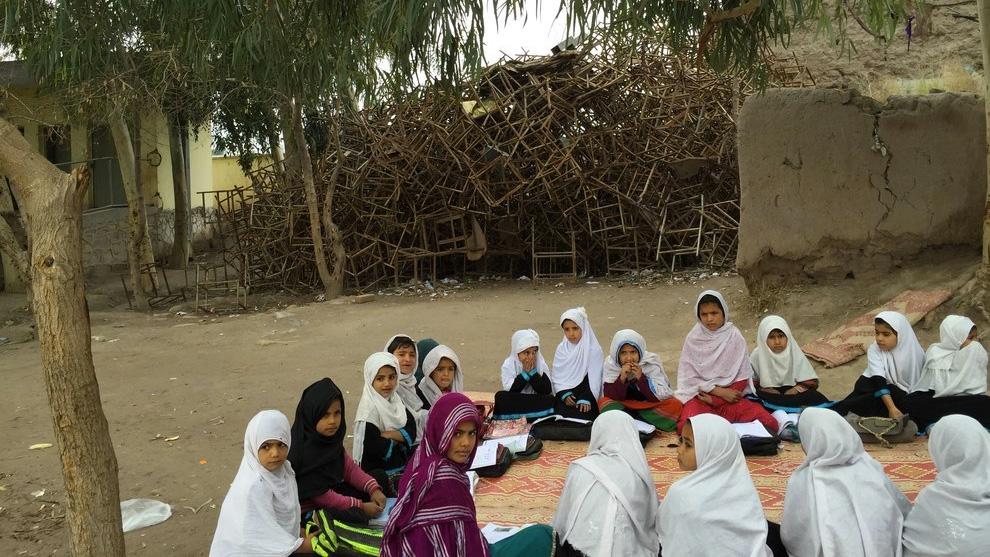Have we been duped? The successful building of schools in Afghanistan may be overstated
A school refurbished with US funding in Nangarhar province in February.
The US war in Afghanistan has left behind a lot of statistics — many of them very grim. But one postitive number had jumped out: the number of kids enrolled in school.
The US has spent hundreds of millions of dollars over the past decade to build schools in war-torn Afghanistan. And, according to the US Agency for International Development, with good results. USAID says that, back in 2002, fewer than a million Afghan children were enrolled in school — none of them girls.
Today, USAID says more than 8 million young Afghans are attending schools including 2.5 million girls.
But a recent BuzzFeed article by reporter Azmat Khan accuses USAID of using inflated enrollment numbers and also of exaggerating the number of schools built with US help that are actually operating right now. She says she and her team spot-checked more than 50 such schools — and found a disturbing reality.
"Most of the buildings that we went to resemble abandoned buildings today," she says. "So in many cases, roofs were collapsing, there were protruding electrical wires, shattered glass, boarded up windows, broken furniture everywhere and that was one of the most visceral, immediate things you would see when you got to these schools. And in terms of the education that was happening or in terms of enrollment — the number of children on the books versus those that were actually attending — we found vast discrepancies."
What Khan describes sounds like neglect or perhaps some kind of attempt to lie and steal from the US taxpayer. Or was it maybe the cost of doing business in a war zone? Khan says that a major part of the discrepacies was over-hyping in Washington. And, that the people — soldiers and officers — say there was a sort of competitiveness to show that unit was building schools.
Khan questions what went wrong and wondered if it was just good intentions that went astray. But, she described a school that she visited while reporting in the Zhari District of Afghanistan that was built in an area that really didn’t have a local population. And many of the elders she spoke with told her that they never understood why this school was built there in the first place.
"There are other communities where there were children actively wanting to go to school and needing a place to study, that were overlooked."
It turns out that the village is the home of a notorious commander — that was really abusive to the local community — who, in exchange for donating the land on which the school sits, extracted a contract from the US military worth hundreds of thousands of dollars.
Khan's story suggests that the US money intended to do good that did the opposite and helped fund these warlords that the local folks didn’t like. But perhaps more important question is: are we repeating this? To what extent were lessons learned?
"What I’ve found — at least with the soldiers I spoke to — many of them felt a dissatisfaction with the way those funds were used," she says. "But, with USAID I found a very aggressive unwillingness to engage on these subjects. And one thing I’ll say is that USAID is an agency that so reliant on federal funding, that any little mistake can be used against them in Congress and can result in the cutting of their funding. Maybe that’s why they weren’t willing to acknowledge something like this. But in the more than six months I spent trying to get answers from them, it was something they didn’t really want to talk about."
